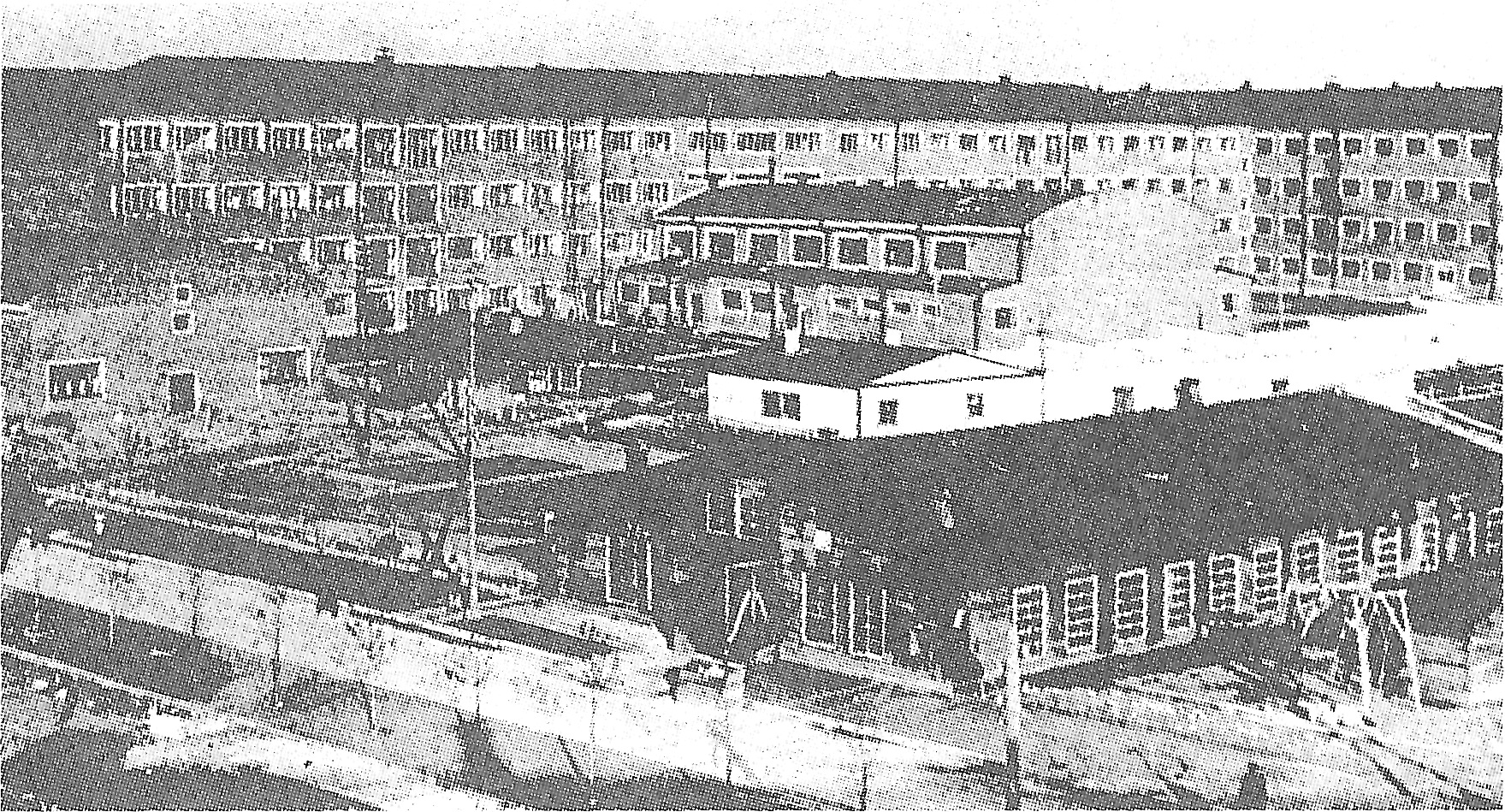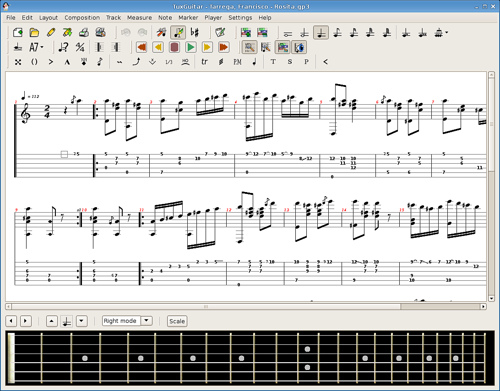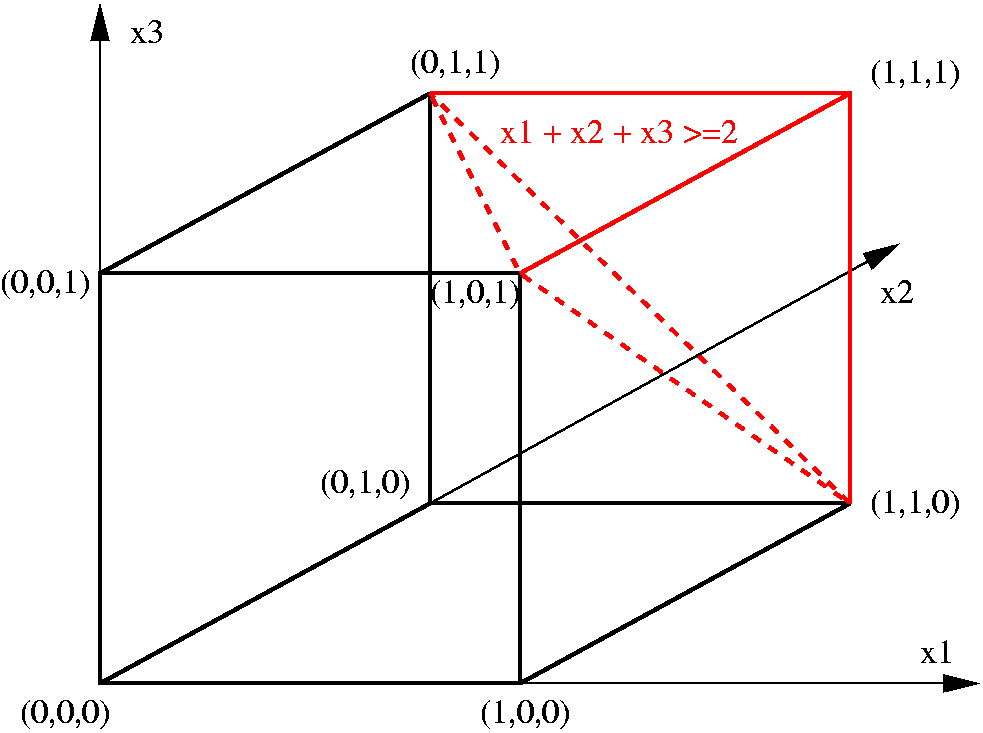|
GLPK
The GNU Linear Programming Kit (GLPK) is a software package intended for solving large-scale linear programming (LP), mixed integer programming (MIP), and other related problems. It is a set of routines written in ANSI C and organized in the form of a callable library. The package is part of the GNU Project and is released under the GNU General Public License. Problems can be modeled in the language GNU MathProg (previously known as GMPL) which shares many parts of the syntax with AMPL and solved with standalone solver GLPSOL. GLPK can also be used as a C library. GLPK uses the revised simplex method and the primal-dual interior point method for non-integer problems and the branch-and-bound algorithm together with Gomory's mixed integer cuts for (mixed) integer problems. GLPK is supported in the free edition of the OptimJ modeling system An independent project provides a Java-based interface to GLPK (via JNI). This allows Java applications to call out to GLPK in a relativel ... [...More Info...] [...Related Items...] OR: [Wikipedia] [Google] [Baidu] |
Mathematical Optimization Software
Given a transformation between input and output values, described by a mathematical function ''f'', optimization deals with generating and selecting a best solution from some set of available alternatives, by systematically choosing input values from within an allowed set, computing the output of the function, and recording the best output values found during the process. Many real-world problems can be modeled in this way. For example, the inputs can be design parameters of a motor, the output can be the power consumption, or the inputs can be business choices and the output can be the obtained profit. An optimization problem, in this case a minimization problem, can be represented in the following way :''Given:'' a function ''f'' : ''A'' \to R from some set ''A'' to the real numbers :''Search for:'' an element ''x''0 in ''A'' such that ''f''(''x''0) ≤ ''f''(''x'') for all ''x'' in ''A''. In continuous optimization, ''A'' is some subset of the Euclidean space R''n'', often s ... [...More Info...] [...Related Items...] OR: [Wikipedia] [Google] [Baidu] |
AMPL
AMPL (A Mathematical Programming Language) is an algebraic modeling language to describe and solve high-complexity problems for large-scale mathematical computing (i.e., large-scale optimization and scheduling-type problems). It was developed by Robert Fourer, David Gay, and Brian Kernighan at Bell Laboratories. AMPL supports dozens of solvers, both open source and commercial software, including CBC, CPLEX, FortMP, MINOS, IPOPT, SNOPT, KNITRO, and LGO. Problems are passed to solvers as nl files. AMPL is used by more than 100 corporate clients, and by government agencies and academic institutions. One advantage of AMPL is the similarity of its syntax to the mathematical notation of optimization problems. This allows for a very concise and readable definition of problems in the domain of optimization. Many modern solvers available on the NEOS Server (formerly hosted at the Argonne National Laboratory, currently hosted at the University of Wisconsin, Madison) accept AMPL inpu ... [...More Info...] [...Related Items...] OR: [Wikipedia] [Google] [Baidu] |
GNU Project
The GNU Project () is a free software, mass collaboration project announced by Richard Stallman on September 27, 1983. Its goal is to give computer users freedom and control in their use of their computers and Computer hardware, computing devices by collaboratively developing and publishing software that gives everyone the rights to freely run the software, copy and distribute it, study it, and modify it. GNU software grants these rights in its GNU General Public License, license. In order to ensure that the ''entire'' software of a computer grants its users all freedom rights (use, share, study, modify), even the most fundamental and important part, the operating system (including all its numerous utility programs) needed to be free software. According to its manifesto, the founding goal of the project was to build a free operating system, and if possible, "everything useful that normally comes with a Unix system so that one could get along without any software that is not fre ... [...More Info...] [...Related Items...] OR: [Wikipedia] [Google] [Baidu] |
Branch And Bound
Branch and bound (BB, B&B, or BnB) is an algorithm design paradigm for discrete and combinatorial optimization problems, as well as mathematical optimization. A branch-and-bound algorithm consists of a systematic enumeration of candidate solutions by means of state space search: the set of candidate solutions is thought of as forming a rooted tree with the full set at the root. The algorithm explores ''branches'' of this tree, which represent subsets of the solution set. Before enumerating the candidate solutions of a branch, the branch is checked against upper and lower estimated ''bounds'' on the optimal solution, and is discarded if it cannot produce a better solution than the best one found so far by the algorithm. The algorithm depends on efficient estimation of the lower and upper bounds of regions/branches of the search space. If no bounds are available, the algorithm degenerates to an exhaustive search. The method was first proposed by Ailsa Land and Alison Doig whil ... [...More Info...] [...Related Items...] OR: [Wikipedia] [Google] [Baidu] |
Free Mathematics Software
Free may refer to: Concept * Freedom, having the ability to do something, without having to obey anyone/anything * Freethought, a position that beliefs should be formed only on the basis of logic, reason, and empiricism * Emancipate, to procure political rights, as for a disenfranchised group * Free will, control exercised by rational agents over their actions and decisions * Free of charge, also known as gratis. See Gratis vs libre. Computing * Free (programming), a function that releases dynamically allocated memory for reuse * Free format, a file format which can be used without restrictions * Free software, software usable and distributable with few restrictions and no payment * Freeware, a broader class of software available at no cost Mathematics * Free object ** Free abelian group ** Free algebra ** Free group ** Free module ** Free semigroup * Free variable People * Free (surname) * Free (rapper) (born 1968), or Free Marie, American rapper and media personal ... [...More Info...] [...Related Items...] OR: [Wikipedia] [Google] [Baidu] |
GNU Project Software
GNU () is an extensive collection of free software (383 packages as of January 2022), which can be used as an operating system or can be used in parts with other operating systems. The use of the completed GNU tools led to the family of operating systems popularly known as Linux. Most of GNU is licensed under the GNU Project's own General Public License ( GPL). GNU is also the project within which the free software concept originated. Richard Stallman, the founder of the project, views GNU as a "technical means to a social end". Relatedly, Lawrence Lessig states in his introduction to the second edition of Stallman's book '' Free Software, Free Society'' that in it Stallman has written about "the social aspects of software and how Free Software can create community and social justice". Name ''GNU'' is a recursive acronym for "GNU's Not Unix!", chosen because GNU's design is Unix-like, but differs from Unix by being free software and containing no Unix code. Stallman chose ... [...More Info...] [...Related Items...] OR: [Wikipedia] [Google] [Baidu] |
Moscow Aviation Institute
Moscow Aviation Institute (National Research University) (MAI; russian: Московский авиационный институт, МАИ) is one of the major engineering institutes in Moscow, Russia. Since its inception MAI has been spearheading advances in aerospace technology both within Russia and worldwide. The university laid emphasis on laboratory instruction in applied science and engineering, specific to the demands of aerospace industry. During World War II part of the university was evacuated to Almaty, Kazakhstan. Staffs and students continued to work on research and wartime production throughout the war. During the Post-War period, the university expanded and assimilated new technologies during the Jet age. Research conducted in the university contributed to heralding the space age. The university has to its merit more than 160,000 specialists, 250 chief designers in the Aerospace Industry. 50 Academicians of the Russian Academy of Sciences, 22 cosmonauts ... [...More Info...] [...Related Items...] OR: [Wikipedia] [Google] [Baidu] |
Java (Sun)
Java is a set of computer software and specifications developed by James Gosling at Sun Microsystems, which was later acquired by the Oracle Corporation, that provides a system for developing application software and deploying it in a cross-platform computing environment. Java is used in a wide variety of computing platforms from embedded devices and mobile phones to enterprise servers and supercomputers. Java applets, which are less common than standalone Java applications, were commonly run in secure, sandboxed environments to provide many features of native applications through being embedded in HTML pages. Writing in the Java programming language is the primary way to produce code that will be deployed as byte code in a Java virtual machine (JVM); byte code compilers are also available for other languages, including Ada, JavaScript, Python, and Ruby. In addition, several languages have been designed to run natively on the JVM, including Clojure, Groovy, and Scala. ... [...More Info...] [...Related Items...] OR: [Wikipedia] [Google] [Baidu] |
OptimJ
OptimJ is an extension for Java with language support for writing optimization models and abstractions for bulk data processing. The extensions and the proprietary product implementing the extensions were developed by Ateji which went out of business in September 2011. OptimJ aims at providing a clear and concise algebraic notation for optimization modeling, removing compatibility barriers between optimization modeling and application programming tools, and bringing software engineering techniques such as object-orientation and modern IDE support to optimization experts. OptimJ models are directly compatible with Java source code, existing Java libraries such as database access, Excel connection or graphical interfaces. OptimJ is compatible with development tools such as Eclipse, CVS, JUnit or JavaDoc. OptimJ is available free with the following solvers: lp_solve, glpk, LP or MPS file formats and also supports the following commercial solvers: MOSEK, IBM ILOG CPLEX Optimization ... [...More Info...] [...Related Items...] OR: [Wikipedia] [Google] [Baidu] |
Cutting-plane Method
In mathematical optimization, the cutting-plane method is any of a variety of optimization methods that iteratively refine a feasible set or objective function by means of linear inequalities, termed ''cuts''. Such procedures are commonly used to find integer solutions to mixed integer linear programming (MILP) problems, as well as to solve general, not necessarily differentiable convex optimization problems. The use of cutting planes to solve MILP was introduced by Ralph E. Gomory. Cutting plane methods for MILP work by solving a non-integer linear program, the linear relaxation of the given integer program. The theory of Linear Programming dictates that under mild assumptions (if the linear program has an optimal solution, and if the feasible region does not contain a line), one can always find an extreme point or a corner point that is optimal. The obtained optimum is tested for being an integer solution. If it is not, there is guaranteed to exist a linear inequality th ... [...More Info...] [...Related Items...] OR: [Wikipedia] [Google] [Baidu] |
Simplex Algorithm
In mathematical optimization, Dantzig's simplex algorithm (or simplex method) is a popular algorithm for linear programming. The name of the algorithm is derived from the concept of a simplex and was suggested by T. S. Motzkin. Simplices are not actually used in the method, but one interpretation of it is that it operates on simplicial '' cones'', and these become proper simplices with an additional constraint. The simplicial cones in question are the corners (i.e., the neighborhoods of the vertices) of a geometric object called a polytope. The shape of this polytope is defined by the constraints applied to the objective function. History George Dantzig worked on planning methods for the US Army Air Force during World War II using a desk calculator. During 1946 his colleague challenged him to mechanize the planning process to distract him from taking another job. Dantzig formulated the problem as linear inequalities inspired by the work of Wassily Leontief, however, at that ... [...More Info...] [...Related Items...] OR: [Wikipedia] [Google] [Baidu] |




